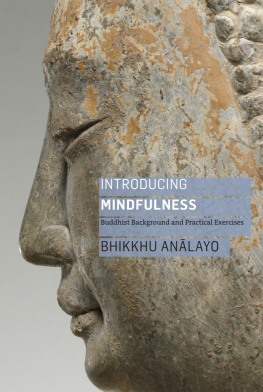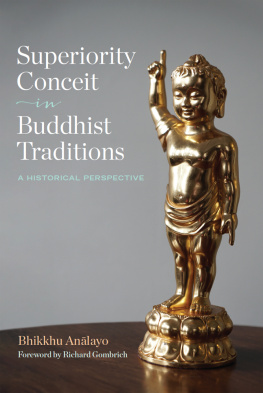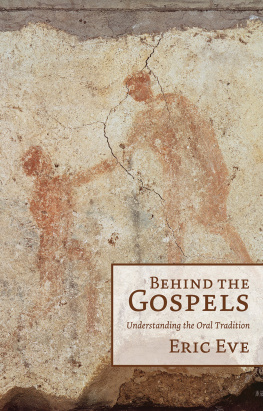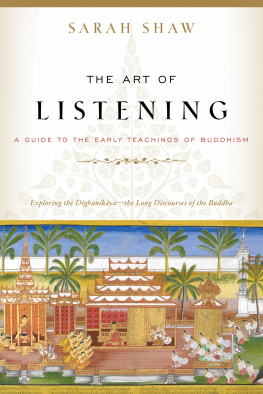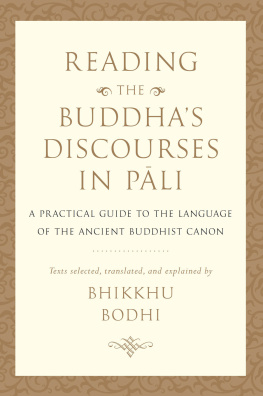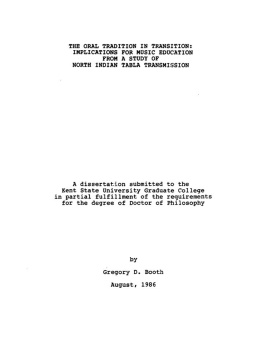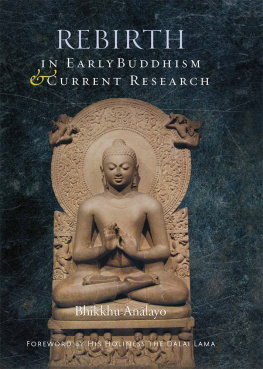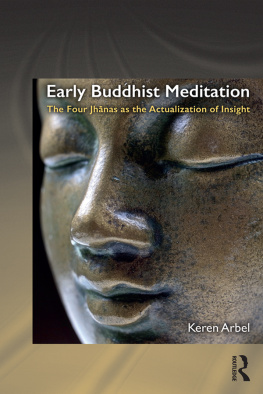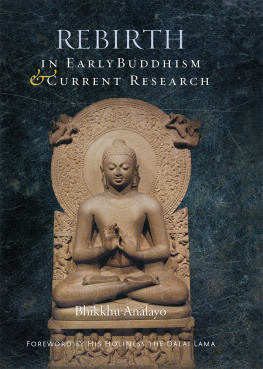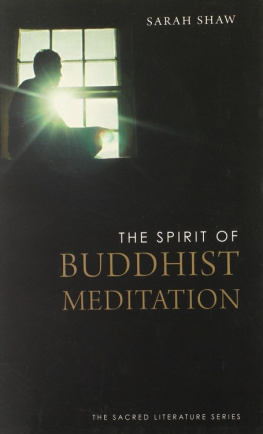A fascinating investigation into the formation and transmission of the early Buddhist oral tradition.

F OR HUNDREDS OF YEARS after his death, the Buddhas teachings were transmitted orally, from person to person. In this volume, acclaimed scholar-monk Bhikkhu Anlayo examines the impact of such oral transmission on early Buddhist texts, be these monastic rules, verses, or prose portions of the early discourses. He scrutinizes various oral aspects of these texts, surveying evidence for memory errors, the impact of attempts at systematization, and instances of additions and innovations. Finally, he explores the implications of the nature of these texts as the final product of centuries of oral transmission and evaluates the type of conclusions that can and cannot be drawn based on them. In-depth but still accessible, Early Buddhist Oral Tradition is an engrossing and enlightening inquiry into the oral dimensions of the early Buddhist texts.
Wisdom Publications
199 Elm Street
Somerville, MA 02144 USA
wisdomexperience.org
2022 Bhikkhu Anlayo
All rights reserved.
No part of this book may be reproduced in any form or by any means, electronic or mechanical, including photography, recording, or by any information storage and retrieval system or technologies now known or later developed, without permission in writing from the publisher.
Library of Congress Cataloging-in-Publication Data
Names: Anlayo, 1962 author.
Title: Early Buddhist oral tradition: textual formation and transmission / Bhikkhu Anlayo.
Description: First. | Somerville: Wisdom Publications, 2022. | Includes bibliographical references and index.
Identifiers: LCCN 2021054630 (print) | LCCN 2021054631 (ebook) | ISBN 9781614298274 (hardcover) | ISBN 9781614298519 (ebook)
Subjects: LCSH: Buddhist education. | Buddhism Study and teaching. | Oral tradition. | Monastic and religious life (Buddhism)
Classification: LCC BQ167 .A53 2022 (print) | LCC BQ167 (ebook) | DDC 294.3/75 dc23/eng/20220222
LC record available at https://lccn.loc.gov/2021054630
LC ebook record available at https://lccn.loc.gov/2021054631
ISBN 978-1-61429-827-4 ebook ISBN 978-1-61429-851-9
26 25 24 23 22
5 4 3 2 1
Cover design by Gopa & Ted 2. Interior design by James Skatges. Set in DGP 11.25/14.9.
Cover art courtesy of The Metropolitan Museum of Art, New York, Gift of Daniel Slott, 1980, www.metmuseum.org.
As an act of Dhammadna, Bhikkhu Anlayo has waived royalty payments for this book.
What is well transmitted orally
can still be empty, vain, and false,
and, too, what is not well transmitted orally
can still be factual, true, and not otherwise. (MN 95)
Introduction

In the following pages I examine the early Buddhist oral tradition from the viewpoint of its formation and transmission. The central question I intend to explore is how best to understand its dynamics: What is the most appropriate model for interpreting the existence of numerous variations between versions of a discourse preserved by different reciter lineages, given that these same parallels also show a remarkable degree of similarity and correspondence (together with exhibiting features of memorization that point to a concern with accurate transmission)? The present book is meant to express my current understanding of this topic in a way accessible to the general reader.
The presentation in what follows is the outcome of some twenty years of studying the relevant textual records, leading to about four hundred publications mainly based on comparative studies of parallel versions of these texts as transmitted by different oral recitation lineages. Central among these publications is my habilitation research, a comparative study of some one hundred fifty Pli discourses of medium length in the light of a broad range of parallels extant in Chinese, Gndhr, Sanskrit, Tibetan, and at times even other languages. Taking up such a range of texts in a single study had the obvious disadvantage that the sheer amount of material prevents the precision regarding details that is possible when doing a comparative study of a single text, ideally based on translating the different parallels. In this respect, my habilitation research can only offer a humble starting point for those wishing to do a closer study of a single discourse.
The advantage, however, is that surveying a broad range of parallels evidences general patterns of orality. This does not happen in a comparable way when doing only a few selected and more detailed comparative studies, where quite naturally the at times erratic nature of variations between parallels can leave a puzzling impression. It is only through an examination of many such cases that patterns behind the apparent muddle become clearer.
My exploration in the following pages begins with the key text recited regularly at fortnightly monastic observances, the code of rules (Pli ptimokkha, Sanskrit prtimoka), and its relation to the narratives purporting to record the circumstances under which a particular rule was promulgated.
Patterns that emerge when studying the code of rules and the respective narratives recur in relation to verses embedded in prose narrations that similarly relate the circumstances believed to have led to the proclamation of the verse(s) in question. I explore these in the second chapter, after providing a brief overview over the different discourse collections. The third to fifth chapters are dedicated to various oral aspects of the early discourses, surveying evidence for memory errors, the impact of attempts at systematization, and instances of additions and innovations. Based on the material examined in this way, in the sixth chapter I explore the implications of the nature of these texts as the final product of centuries of oral transmission and evaluate the type of conclusions that can (and cannot) be drawn based on them, followed by presenting a sketch of the dynamics of early Buddhist orality.
A chief problem in studying the evidence provided by the early texts is the almost inevitable tendency to think in terms of modern modes of producing written texts. Yet, textual production in an oral setting differs substantially and needs to be considered on its own terms. My attempts to do justice to this requirement have benefitted from my experience of living many years in Sri Lanka, where the oral dimension of communication is still considerably more important than in the West, as well as from staying for some time on another occasion with tribal people living in the traditional way of hunting and gathering, a way of life in which communications were still entirely oral. Such personal experiences have helped me in my struggle to step out of the framework of thinking exclusively in terms of the written medium.
My presentation here is meant to provide an introduction to the relevant themes rather than an exhaustive survey, which within the limitations of a single monograph is not possible. Based on excerpts from my own more detailed studies of the respective points, I present a few selected examples to illustrate patterns of more general relevance. My aim throughout is to render academic research by myself and others more widely accessible, for which reason I try my best to explain ideas and concepts that are not necessarily familiar to the general reader. I have also endeavored to keep the main text as accessible as possible by relegating the more academic type of information to annotation. In addition, each chapter concludes with a brief summary of the main points of my discussion. In this way I trust it will be possible for the general reader to ignore the annotation and just read the main text, whereas my academic colleagues will hopefully still find in the annotations the information required to substantiate my presentation.


